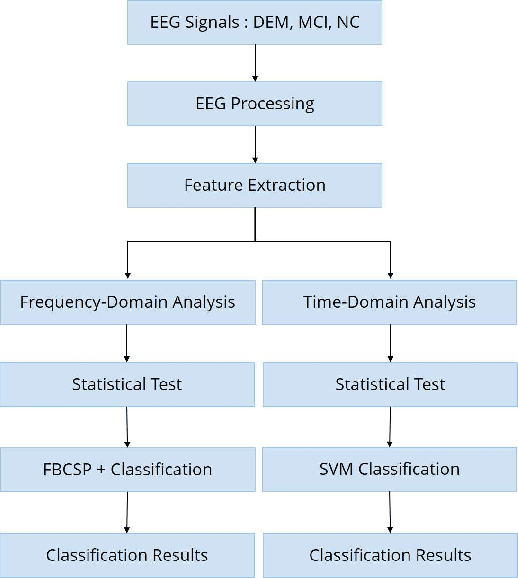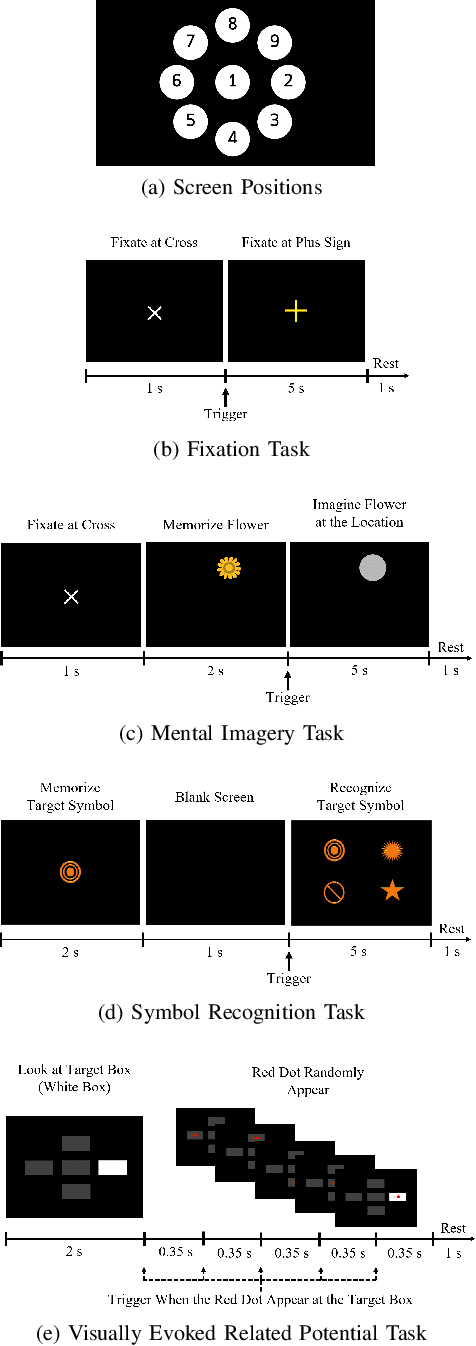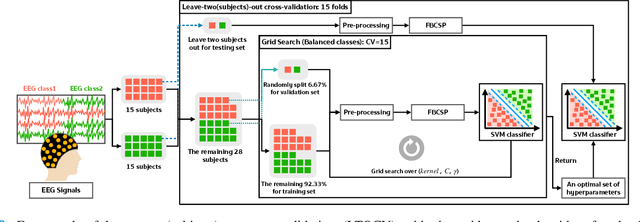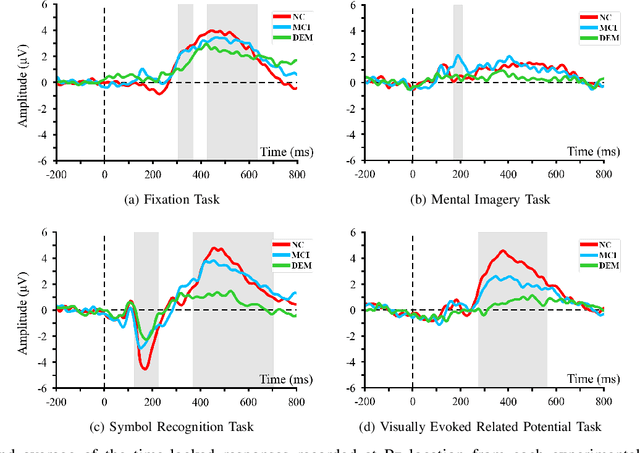Supavit Kongwudhikunakorn
Combining EEG and NLP Features for Predicting Students' Lecture Comprehension using Ensemble Classification
Nov 18, 2023



Abstract:Electroencephalography (EEG) and Natural Language Processing (NLP) can be applied for education to measure students' comprehension in classroom lectures; currently, the two measures have been used separately. In this work, we propose a classification framework for predicting students' lecture comprehension in two tasks: (i) students' confusion after listening to the simulated lecture and (ii) the correctness of students' responses to the post-lecture assessment. The proposed framework includes EEG and NLP feature extraction, processing, and classification. EEG and NLP features are extracted to construct integrated features obtained from recorded EEG signals and sentence-level syntactic analysis, which provide information about specific biomarkers and sentence structures. An ensemble stacking classification method -- a combination of multiple individual models that produces an enhanced predictive model -- is studied to learn from the features to make predictions accurately. Furthermore, we also utilized subjective confusion ratings as another integrated feature to enhance classification performance. By doing so, experiment results show that this framework performs better than the baselines, which achieved F1 up to 0.65 for predicting confusion and 0.78 for predicting correctness, highlighting that utilizing this has helped improve the classification performance.
A Pilot Study on Visually-Stimulated Cognitive Tasks for EEG-Based Dementia Recognition Using Frequency and Time Features
Mar 05, 2021



Abstract:Dementia is one of the main causes of cognitive decline. Since the majority of dementia patients cannot be cured, being able to diagnose them before the onset of the symptoms can prevent the rapid progression of the cognitive impairment. This study aims to investigate the difference in the Electroencephalograph (EEG) signals of three groups of subjects: Normal Control (NC), Mild Cognitive Impairment (MCI), and Dementia (DEM). Unlike previous works that focus on the diagnosis of Alzheimer's disease (AD) from EEG signals, we study the detection of dementia to generalize the classification models to other types of dementia. We have developed a pilot study on machine learning-based dementia diagnosis using EEG signals from four visual stimulation tasks (Fixation, Mental Imagery, Symbol Recognition, and Visually Evoked Related Potential) to identify the most suitable task and method to detect dementia using EEG signals. We extracted both frequency and time domain features from the EEG signals and applied a Support Vector Machine (SVM) for each domain to classify the patients using those extracted features. Additionally, we study the feasibility of the Filter Bank Common Spatial Pattern (FBCSP) algorithm to extract features from the frequency domain to detect dementia. The evaluation of the model shows that the tasks that test the working memory are the most appropriate to detect dementia using EEG signals in both time and frequency domain analysis. However, the best results in both domains are obtained by combining features of all four cognitive tasks.
 Add to Chrome
Add to Chrome Add to Firefox
Add to Firefox Add to Edge
Add to Edge